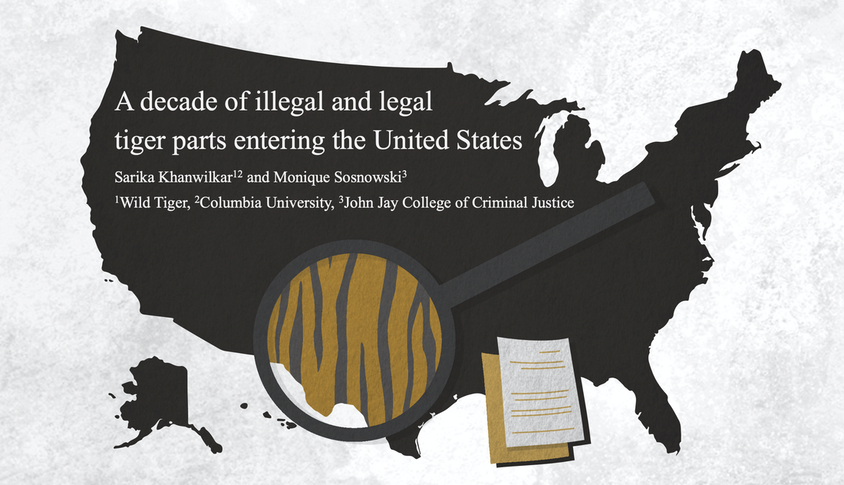|
Exactly one year ago, at the 2019 Student Conference on Conservation Science-New York at the American Museum of Natural History, Sarika and current research collaborator Monique Sosnowski met. This year, Sarika shared their work at the same conference.
Monique is an environmental criminologist, and it was her presentation on this topic that interested Sarika and sparked conversations about wildlife trafficking between the two. They each shared interest in the trafficking of tiger parts, and the role that the United States (US) plays in this global issue. While habitat loss has played a major role in reducing tiger populations since the 1970's, poaching has and continues to be a primary threat to the tiger's future. Demand for tiger parts drives tiger poaching, and identifying patterns of trade and trade routes is an important area of research to inform science-driven anti-trafficking interventions. Most research on tiger trafficking has focused on Asia and little is known about tiger parts entering the US, which is a major market for wildlife products. Sarika and Monique decided to join forces, combining their expertise in wildlife trafficking and tiger conservation, in their project 'A decade of illegal and legal tiger parts entering the US.' This conference was an opportunity to share their findings and the co-authors aim to get this research published in a peer-review journal soon. We look forward to sharing more details. Graphic by Pooja Gupta, https://www.poojaslaboratory.com/ Comments are closed.
|
AuthorRegular updates from the Wild Tiger team. Archives
February 2023
Categories
All
|


 RSS Feed
RSS Feed
